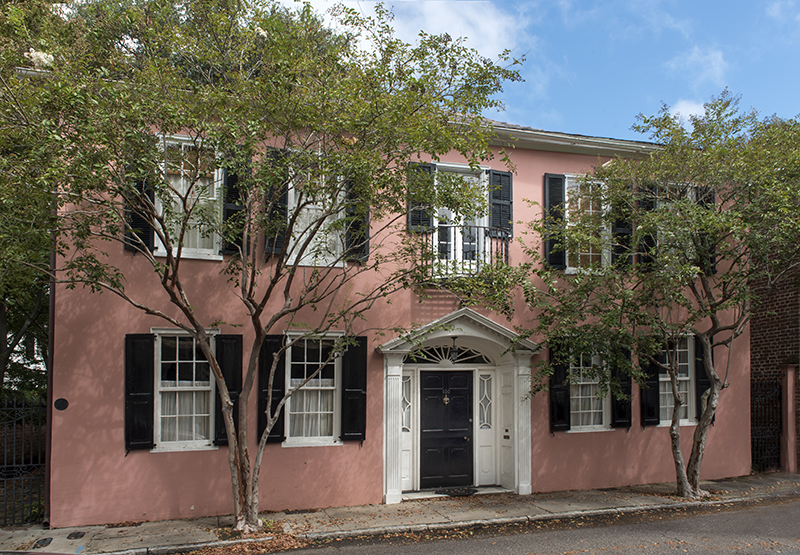Isaac Harby
Jewish journalist, teacher, playwright, religious reformer
Eldest son of Solomon and Rebecca Moses Harby, the brilliant Isaac Harby (1788–1828) was still a teenager in 1804 when he left school to become an assistant teacher at the College of Charleston. He studied law briefly, but when his father died in 1805 he assumed responsibility for supporting his mother and younger siblings. He soon joined his sister Rachel on Edisto Island, where he opened a school for children of the island’s plantation owners, but he returned to town after Rachel’s husband, Abraham Cohen, and her infant son died in the autumn of 1809.
In January 1810, Harby established a small school in Bedon’s Alley and later that year married Rachael Mordecai (1782–1827). His academy thrived and, in 1813, moved into new quarters on Fulton Street (formerly Beresford Street or Beresford’s Alley).
While directing the school, Isaac Harby pursued a second career as newspaper publisher. He founded two short-lived weeklies and, from 1814 to 1817, owned and operated the City Gazette and Commercial Advertiser/Southern Patriot and Commercial Advertiser. He then opened a “Classical Academy” for the instruction of “Youth — Both Sexes” in a building known as Cardoza’s Long Room. In 1818, Harby bought this property on Tradd Street and moved his academy here. He continued the school for a year after being hired as editor of the City Gazette in 1821, but in October 1822, turned it over to Myer M. Cohen, who reopened the academy at his own residence on Beaufain Street.
Isaac Harby left the City Gazette when a new owner took over and started another daily newspaper, The Examiner, which quickly failed. In February 1824, Harby reopened his Tradd Street school for day and boarding students. The following year, he began a three-year career as teacher in Charleston’s Free School system. During this period, he helped launch the Reformed Society of Israelites, the first sustained effort to reform Judaism in America. Harby delivered the Society’s first Discourse and, with his friends David Nunes Carvalho and Abraham Moïse II, developed a reform prayer book—again, the first in the young nation.
Besides newspaper writing, Isaac Harby tried his hand as a playwright. His first effort was rejected by Alexander Placide, the French-born manager of the Charleston Theatre, but his second play, The Gordian Knot, completed in 1807, was finally performed in 1810. His third and last play, Alberti, opened at the Charleston Theatre in April 1819; President James Monroe, who was visiting Charleston at the time, attended its second performance.
Rachael Mordecai Harby died in the spring of 1827 “after a distressing illness of four months,” leaving her husband with six young children. A few months later, accompanied by his sister Caroline de Litchfield Harby, Isaac Harby relocated to New York and began work immediately as an editor of the New York Mirror and drama critic for the Evening Post. There he succumbed to typhoid fever on December 14, 1828, just five weeks after his fortieth birthday.
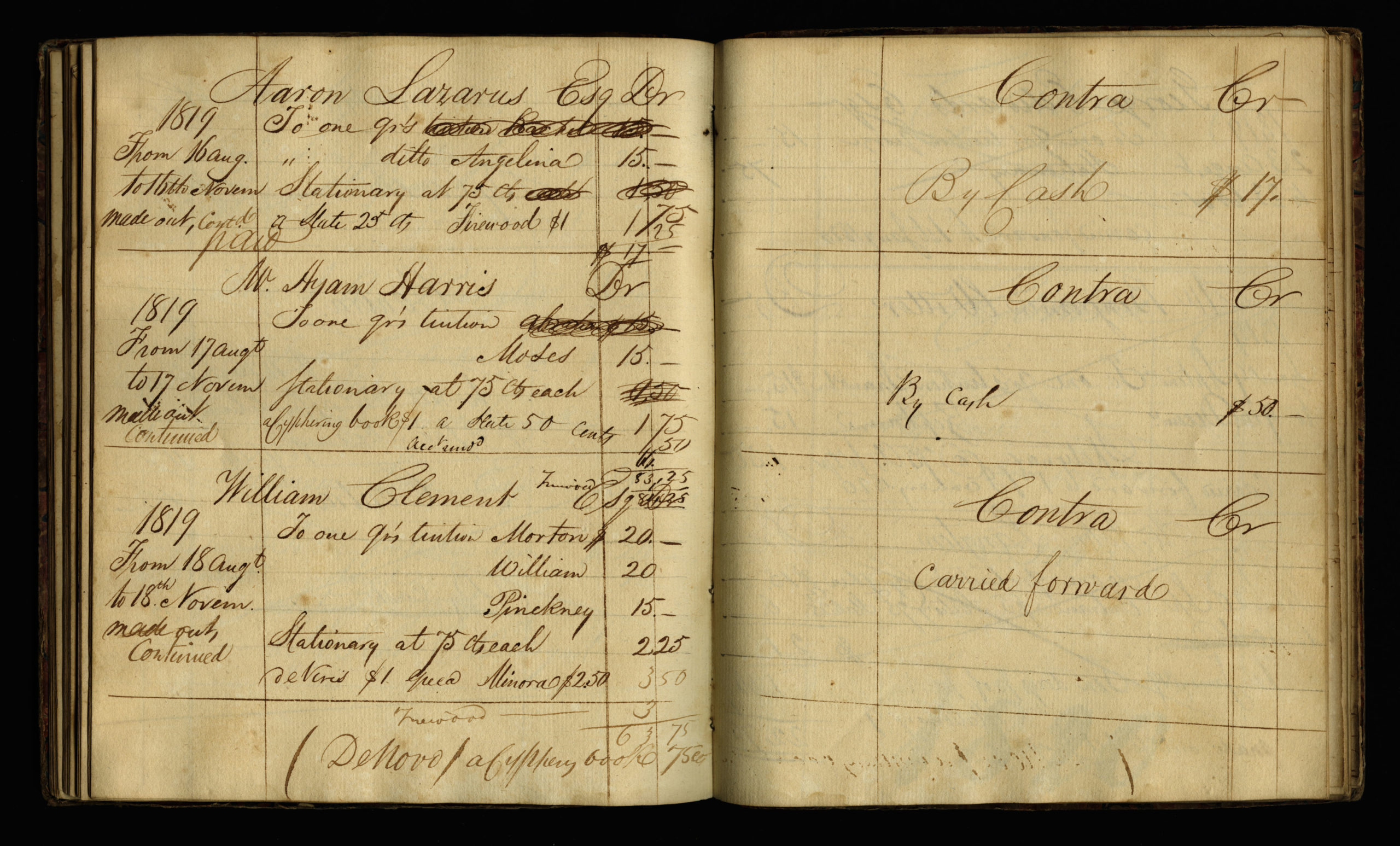
Isaac Harby’s academy cash book, 1819-1820
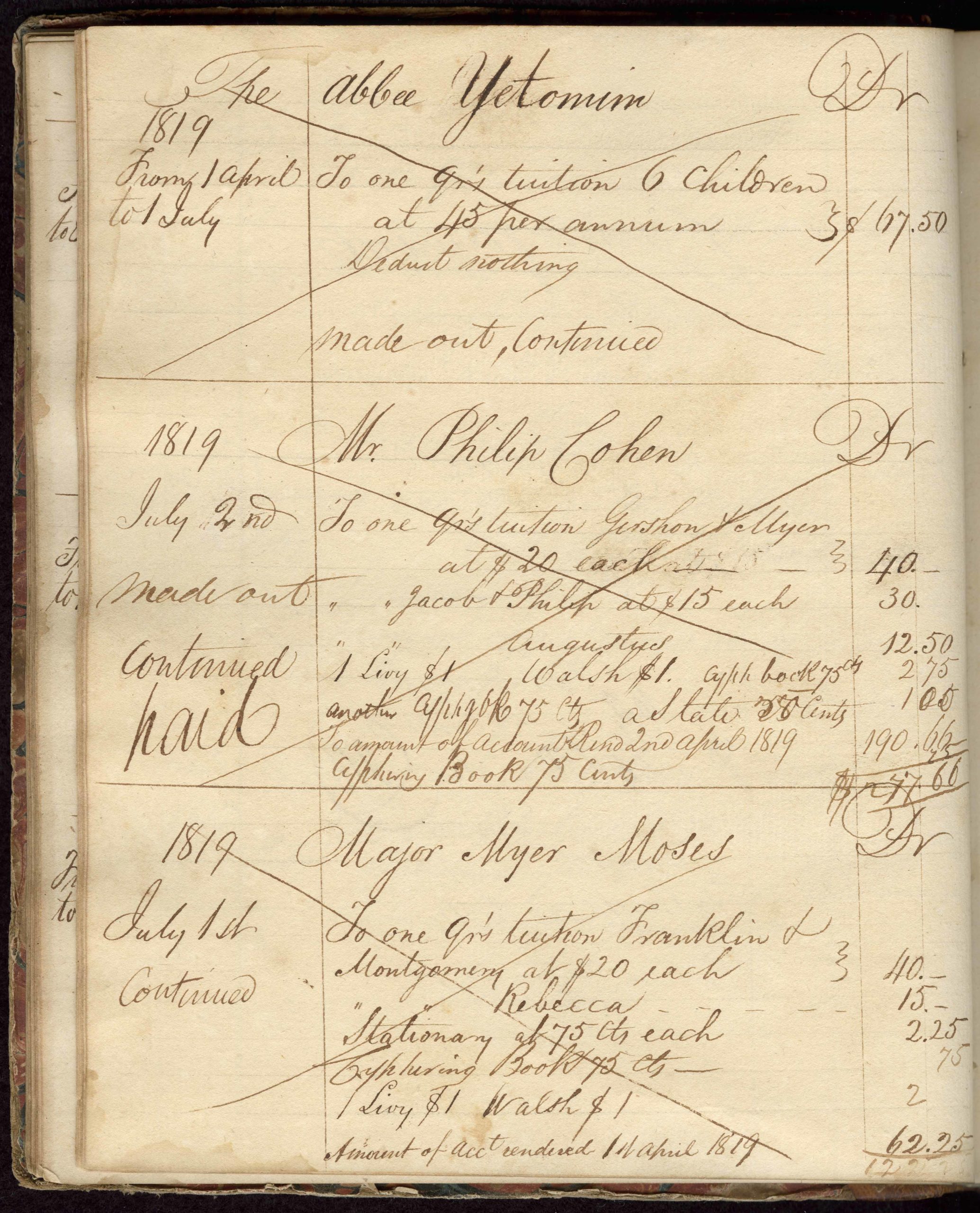
Hebrew Orphan Society tuition payment
Isaac Harby's academy cash book, recording tuition paid for six children by Abbee [Abi] Yetomim, the Hebrew Orphan Society, in 1819.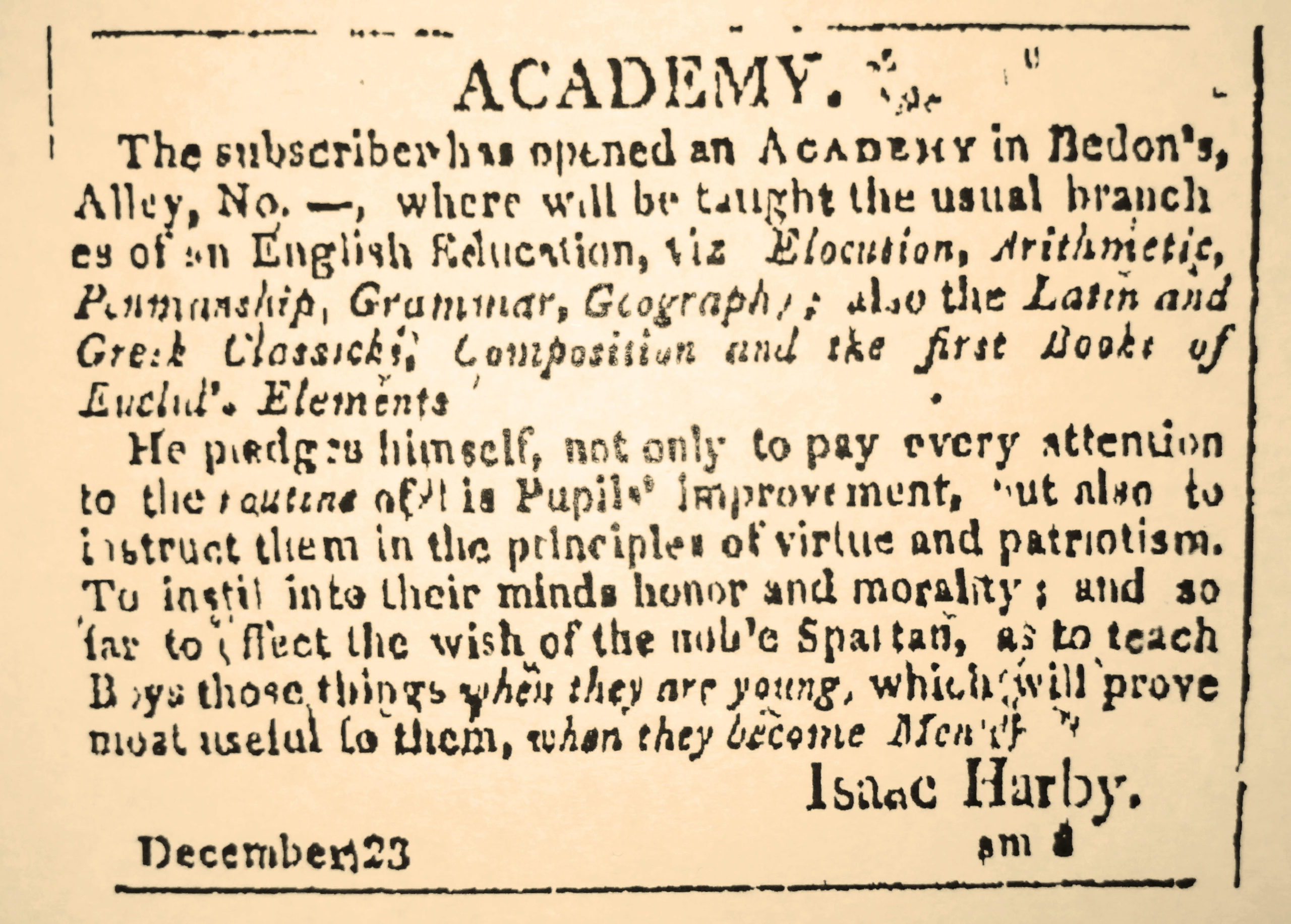
Harby’s notice of academy in Bedon’s Alley
Charleston City Gazette, January 10, 1810.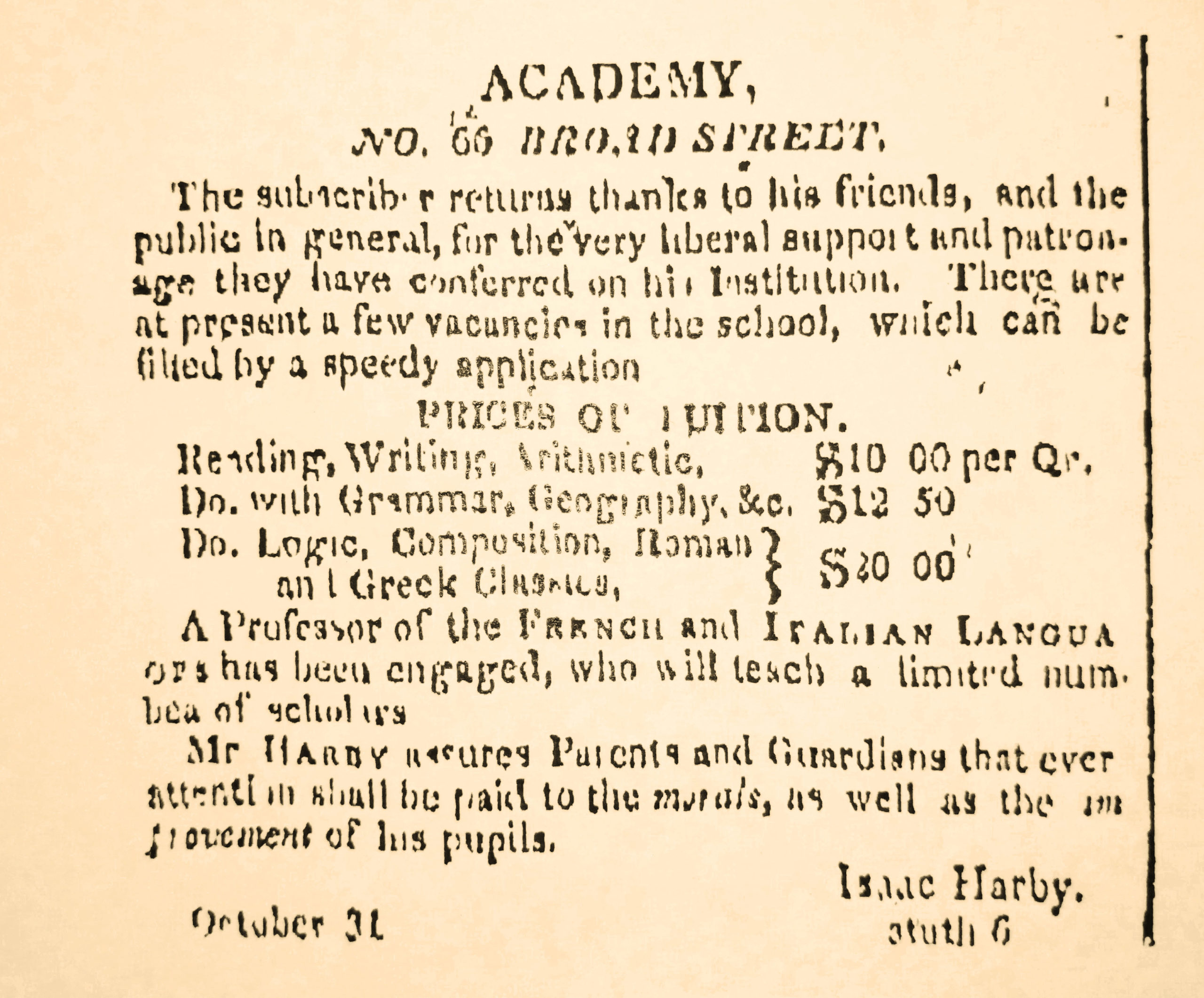
Harby’s notice of academy at 66 Broad Street
Charleston City Gazette, November 4, 1812.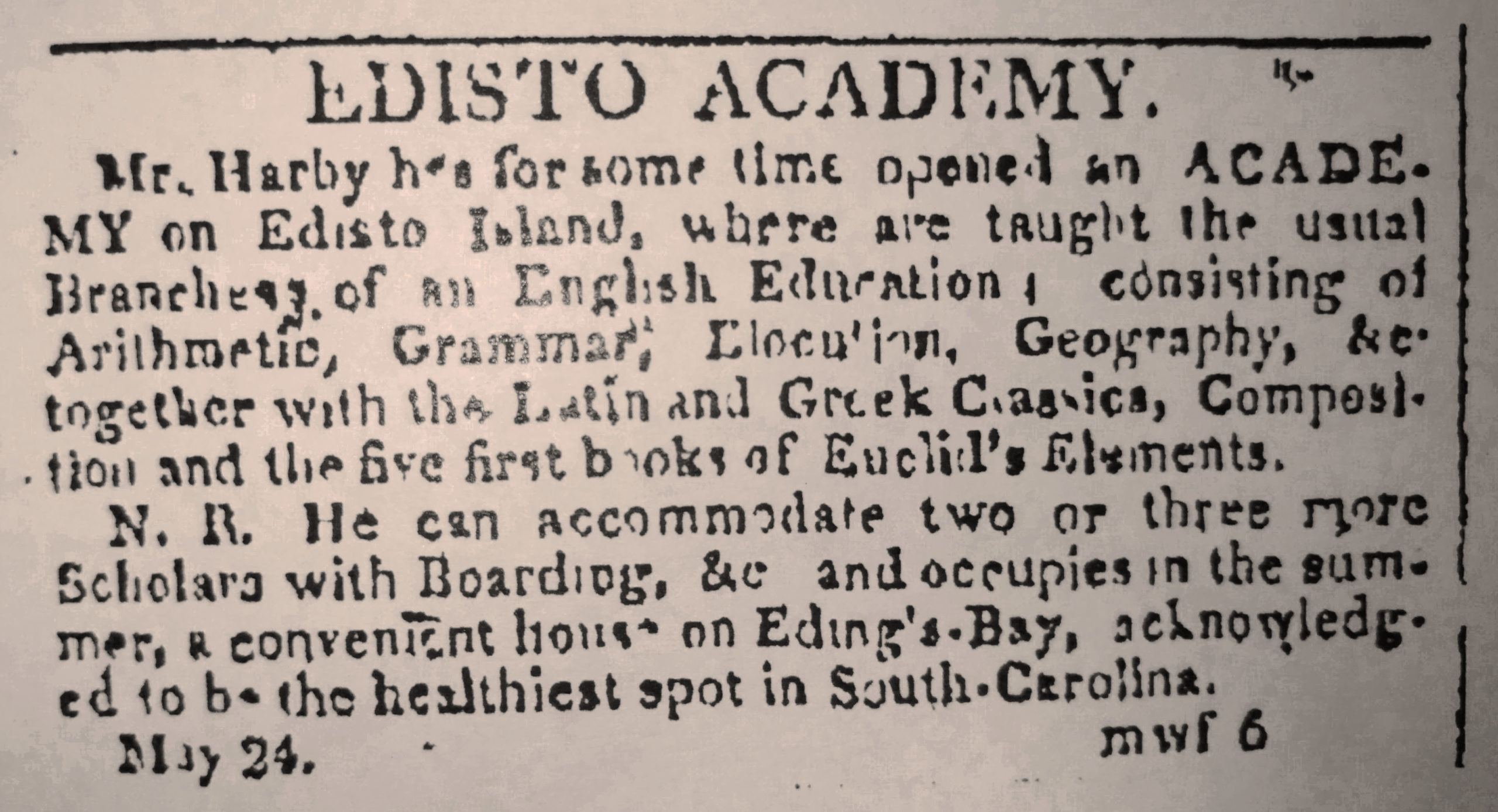
Harby’s notice of academy on Edisto Island
Charleston City Gazette, June 2, 1809.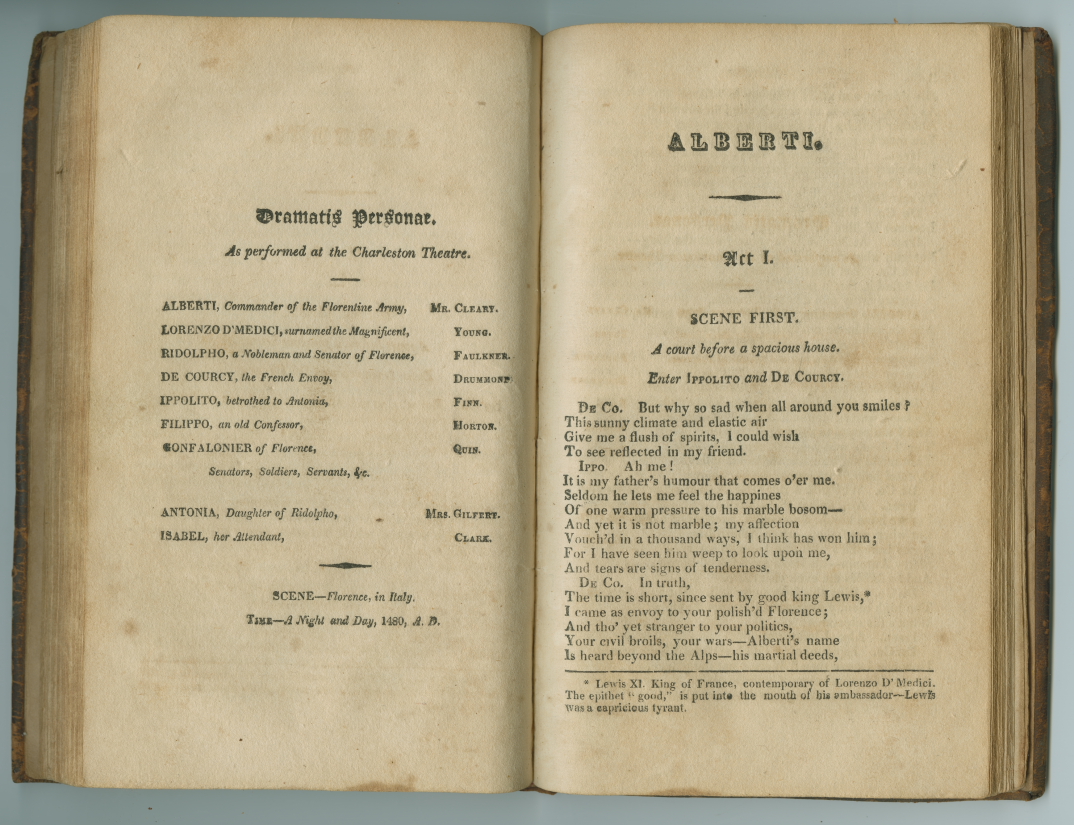
Alberti
Opening lines of Isaac Harby’s play Alberti, 1819.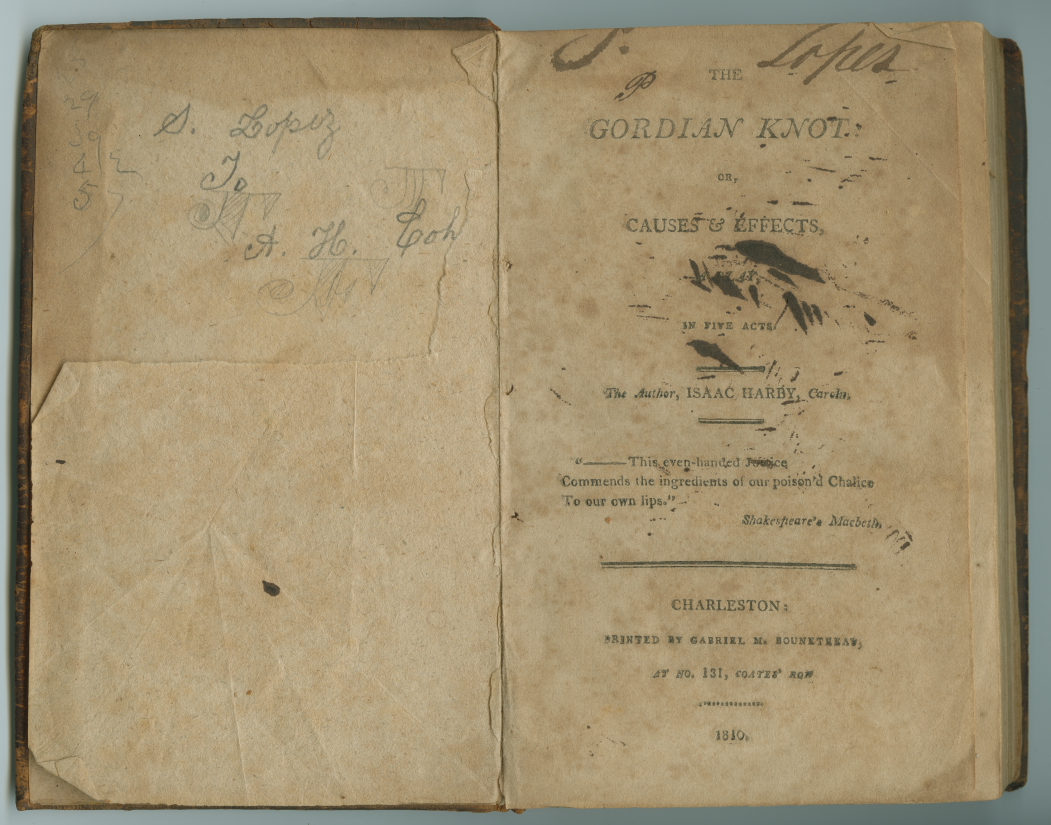
The Gordian Knot
Title page of Isaac Harby’s play The Gordian Knot, 1810.